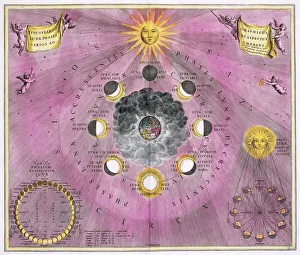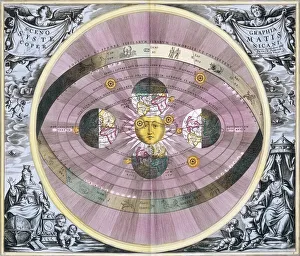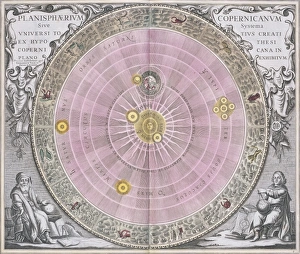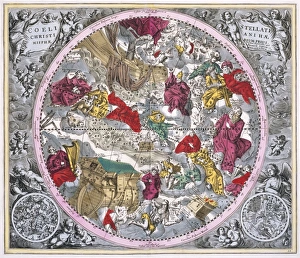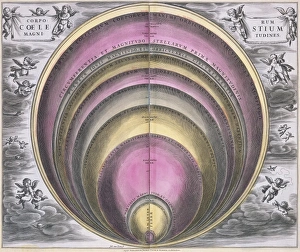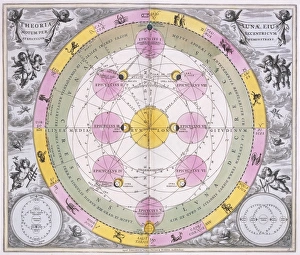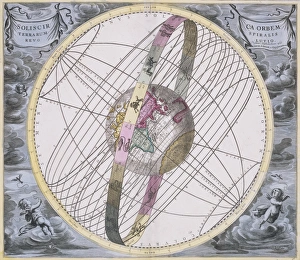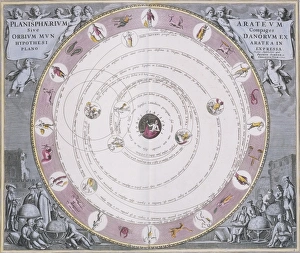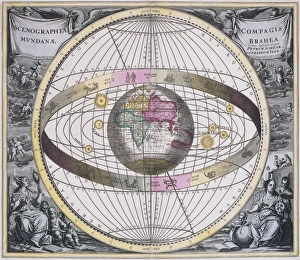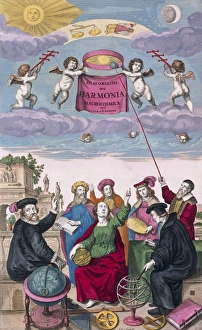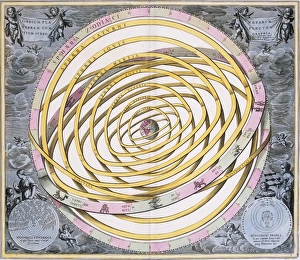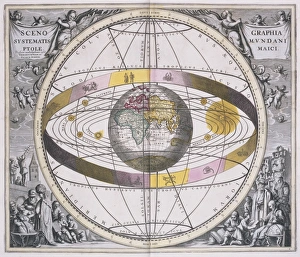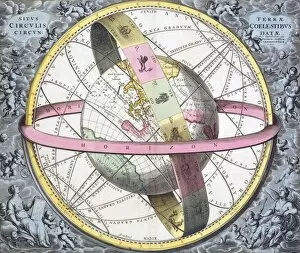Harmonica Macrocosmica Collection
"Harmonica Macrocosmica
All Professionally Made to Order for Quick Shipping
"Harmonica Macrocosmica: Unveiling the Celestial Symphony of 1708" Step into a mesmerizing journey through time and space as we explore the captivating world of "Harmonica Macrocosmica. " Created in 1708, this masterpiece unveils the intricate tapestry woven by our ancestors to understand the cosmos. In an era when scientific discoveries were reshaping humanity's perception of the universe, "Harmonica Macrocosmica" emerged as a testament to mankind's insatiable curiosity. It encapsulates various celestial concepts prevalent during that time, offering us glimpses into their profound significance. Phases of the Moon, meticulously depicted within its pages, reveal our fascination with lunar cycles and their influence on earthly affairs. The Copernican worldview takes center stage, challenging traditional beliefs by placing the Sun at the heart of our solar system. This revolutionary notion is further exemplified through the Copernican planisphere—a visual representation that forever altered how we perceive celestial bodies. Delving deeper into religious symbolism, "Harmonica Macrocosmica" presents Christianized constellations—stars arranged to depict biblical figures and stories. This fusion between faith and astronomy reflects society's attempt to reconcile science with deeply ingrained spiritual beliefs. The awe-inspiring sizes of celestial bodies showcased within these pages remind us of our humble place in this vast cosmic symphony. From planets to stars, each entity holds its own unique allure and mystery waiting to be unraveled. Epicycles intricately mapped out Moons' orbits around their respective planets while highlighting complexities inherent in understanding heavenly motions. Meanwhile, exploring Earth's perspective from afar reveals how ancient astronomers envisioned Suns orbiting around our planet—an enchanting concept now known as geocentrism. Drawing inspiration from Aratus planisphere—a Greek work dating back centuries—the creators behind "Harmonica Macrocosmica" pay homage to classical knowledge while pushing the boundaries of astronomical understanding.

